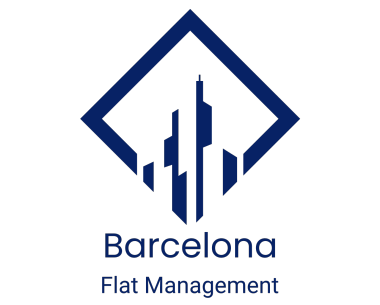Barcelona’s rental market is a complex and dynamic entity, characterized by its fluctuating prices and diverse range of influences. From the bustling city center to tranquil suburban neighborhoods, rental costs can vary significantly, reflecting the city’s multifaceted appeal.
This article aims to unravel the myriad factors contributing to these price fluctuations, offering a deep dive into the economic, social, and regulatory elements that shape Barcelona’s rental landscape. Understanding these intricacies is key for both potential renters and landlords navigating this ever-evolving market.
Uncovering the Drivers: What Influences Barcelona’s Rental Prices
Several key factors contribute to the ever-changing rental prices in Barcelona, painting a picture of a city where location, property type, and market demand are pivotal. Location is paramount; areas like Eixample and Gràcia attract higher rents due to their central positioning and vibrant lifestyle offerings, whereas more peripheral neighborhoods like Zona Franca offer more affordability.
The type of property also significantly influences price. Modern, well-maintained apartments or those with amenities like a balcony or terrace command higher rents, reflecting the demand for comfortable and stylish living spaces. Conversely, older or less-equipped properties tend to be priced lower.
Market demand, driven by both local residents and the influx of international renters, plays a crucial role. This demand is often influenced by Barcelona’s strong tourism sector, with areas popular among tourists experiencing higher rental prices. Additionally, economic trends, including employment rates and the overall health of the local economy, impact people’s ability to pay rent, thereby influencing market prices.
Riding the Seasonal Tide: The Rhythms of Barcelona’s Rental Market
Barcelona’s rental market exhibits notable seasonal fluctuations, deeply influenced by the city’s popularity as a tourist destination. During peak tourist seasons, particularly in the summer months and around major events like the Mobile World Congress or Primavera Sound Festival, rental prices tend to spike. This is especially evident in central neighborhoods and those near major attractions, where short-term rentals cater to the influx of visitors.
Conversely, the off-season sees a relative dip in rental prices. The demand from tourists wanes, and landlords who primarily rent to visitors may lower prices to attract longer-term tenants. This pattern offers opportunities for budget-conscious renters to secure better deals, particularly in areas that are tourist hotspots.
The impact of holidays like Christmas and Easter also plays a role in these fluctuations. During these periods, there’s often a surge in demand as people travel to the city to celebrate, temporarily driving up rental costs.
Understanding these seasonal trends is crucial for renters and landlords alike. It helps renters plan their rental timings strategically, while landlords can adjust their rental strategies to maximize occupancy and returns throughout the year in Barcelona’s vibrant rental landscape.
Policy Impact: How Government Decisions Shape Barcelona’s Rental Prices
The rental market in Barcelona is significantly influenced by local government policies and regulations, which play a crucial role in determining rental prices. Rent control measures, aimed at stabilizing the housing market and making rentals more affordable for residents, directly affect how much landlords can charge. These regulations are particularly prominent in areas designated as ‘tensioned housing markets’, where rents have skyrocketed due to high demand.
Zoning laws also have a substantial impact. Restrictions on new constructions or limits on the conversion of residential properties into tourist apartments can reduce the supply of available rentals, potentially driving up prices in certain areas.
Recent policy changes, such as those targeting short-term rentals, have had notable implications. The stringent regulation of tourist apartments has aimed to free up more properties for long-term residents, potentially easing the rental prices. However, these policies also present challenges, such as the risk of driving rental activities underground, leading to a lack of regulation and potential safety issues.
Forecasting Barcelona’s Rental Market: Trends Shaping the Future
As we look towards the future of Barcelona’s rental market, several current trends provide insights into its trajectory. The growing emphasis on sustainability and green living is likely to increase demand for eco-friendly properties, potentially driving up rental prices for such accommodations. Additionally, the rise in remote working could shift demand from city centers to quieter, more spacious neighborhoods, affecting rental prices across the city.
Technological advancements, particularly in the realm of property management and smart homes, are poised to make rental properties more attractive and efficient. This could lead to increased rental values for properties that incorporate these technologies.
Demographic changes, such as an aging population and the influx of young professionals and international students, will continue to shape rental demand. Areas favored by these demographics could see fluctuating rental prices in response to changing preferences and needs.
Global economic shifts, including the aftermath of the pandemic and international trade dynamics, will also impact the rental market. Economic recovery and growth will likely bolster rental demand, while economic downturns could lead to a more cautious approach from both renters and landlords.
Anticipating these trends and understanding their potential impacts can help both renters and investors make informed decisions in Barcelona’s ever-evolving rental market.
Looking Ahead: Understanding Barcelona’s Rental Market Dynamics
Barcelona’s rental market is a complex tapestry, influenced by a variety of factors including governmental policies, seasonal changes, and evolving trends. Understanding these dynamics is key for anyone looking to navigate this market effectively. From the impacts of local regulations to the shifts in demand driven by global economic and technological changes, each element plays a crucial role in shaping rental prices. Renters and investors alike must stay informed and adaptable to succeed in this vibrant landscape.
As Barcelona continues to grow and change, so too will its rental market, offering new opportunities and challenges alike. By staying ahead of these changes and understanding their implications, one can make the most of the opportunities that Barcelona’s rental market has to offer.













